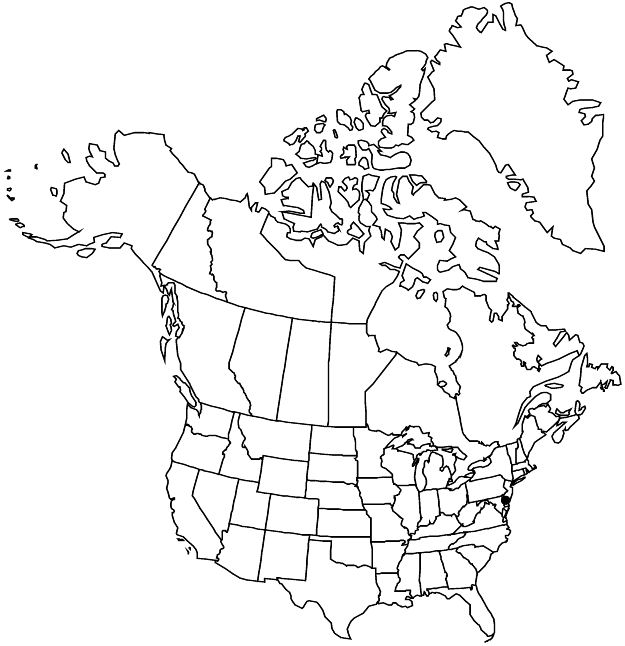Crataegus delawarensis
Bot. Gaz. 35: 102. 1903.
Shrubs, 10–20 dm. Stems: twigs: new growth light green at first, pubescence not recorded, 1-year old dull red-brown, marked by occasional large, oblong lenticels, 2-years old light gray-brown; thorns on twigs straight or slightly curved, 1-year old dark red-brown, slender, 3–4 cm. Leaves: stipules linear, acuminate, coarsely glandular-serrate; petiole length not recorded, distally slightly wing-margined, grooved, pubescence not recorded, glandular, glands deciduous, few, dark red, small; blade abaxial paler than adaxial, light yellow green adaxially, rhombic to ovate, 5–6 cm length/width = 1.8–2, membranous, base narrowed from near mid blade, or base broadly cuneate and entire on vigorous shoots, lobes 3 or 4 per side distally, short, lobe apex acute, margins finely, sometimes doubly, serrate, teeth gland-tipped, veins 3 or 4 per side, apex acute, surfaces glabrous. Inflorescences 5–8-flowered; branches glabrous; bracteoles reddish, acute, margins glandular. Flowers 15 mm diam.; hypanthium usually glabrous, sometimes hairy; sepals broadly triangular, margins coarsely glandular-serrate, apex acuminate; stamens 10, anthers pale yellow; styles 3 or 4, arising from rough tomentum. Pomes dark red, suborbicular, 11–12 mm diam. wider than tall, not pruinose; sepals closely appressed; pyrenes 3 or 4, dorsally prominently grooved.
Phenology: Flowering Apr; fruiting Sep–Oct.
Habitat: Brush
Elevation: 20–100 m
Discussion
Of conservation concern.
Crataegus delawarensis is known only from northern Delaware; it differs from other members of the series by its narrow leaf blades and yellow anthers.
Selected References
None.
